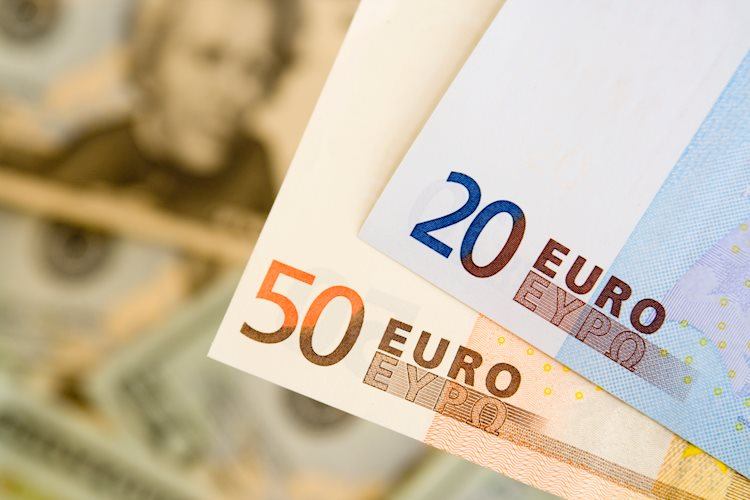The EUR/USD pair is currently trading near 1.1185 in the early European session on Monday, with a slight weakening due to the modest recovery of the US Dollar. However, the downside of the pair may be limited as US Federal Reserve Chair Powell has indicated a potential rate cut in September. The daily chart shows that EUR/USD remains bullish as it holds above the key 100-day EMA, with the RSI indicating an overbought condition. This suggests the possibility of further consolidation before any near-term appreciation in the pair. The first resistance level to watch is at 1.1223, followed by 1.1275 and 1.1360, with key support at the 1.1100 round figure.
The Euro is the currency used in 20 European Union countries that make up the Eurozone and is the second most traded currency in the world after the US Dollar. The Euro accounted for 31% of all foreign exchange transactions in 2022, with an average daily turnover exceeding $2.2 trillion. EUR/USD is the most heavily traded currency pair globally, making up an estimated 30% of all transactions. The European Central Bank (ECB) in Frankfurt, Germany, manages monetary policy and sets interest rates to maintain price stability by controlling inflation or stimulating growth. Interest rate decisions are made by the ECB Governing Council at eight meetings per year.
Eurozone inflation data, measured by the Harmonized Index of Consumer Prices (HICP), is crucial for the Euro. If inflation exceeds the ECB’s 2% target, the bank may need to raise interest rates to control it. Higher interest rates generally benefit the Euro, making the region more attractive to global investors. Economic indicators such as GDP, Manufacturing, Services PMIs, employment, and consumer sentiment surveys can influence the Euro’s direction. A strong economy attracts foreign investment and may lead to interest rate hikes, strengthening the Euro. Economic data from the four largest Eurozone economies – Germany, France, Italy, and Spain – are significant as they make up 75% of the region’s economy.
The Trade Balance is another important data release for the Euro, measuring the difference between a country’s exports and imports over a specific period. A positive net Trade Balance, indicating higher exports than imports, strengthens a currency as foreign buyers seek highly sought-after goods. Positive Trade Balance data can boost a currency’s value, while a negative balance can weaken it. Understanding these economic indicators and data releases can help traders and investors make informed decisions when trading the Euro and the EUR/USD pair.
In conclusion, the EUR/USD pair is currently trading near 1.1185 in the early European session, with a potential downside limited due to the US Dollar’s modest recovery and indications of a rate cut by the US Federal Reserve in September. The Euro is the currency of the Eurozone and the second most traded currency in the world, with EUR/USD being the most heavily traded currency pair. Understanding key economic indicators and data releases such as inflation, GDP, and Trade Balance can help investors anticipate movements in the Euro and the EUR/USD pair. Monitoring these factors and staying informed about central bank decisions and economic data releases can be valuable for traders looking to trade the Euro and the EUR/USD pair successfully.




































